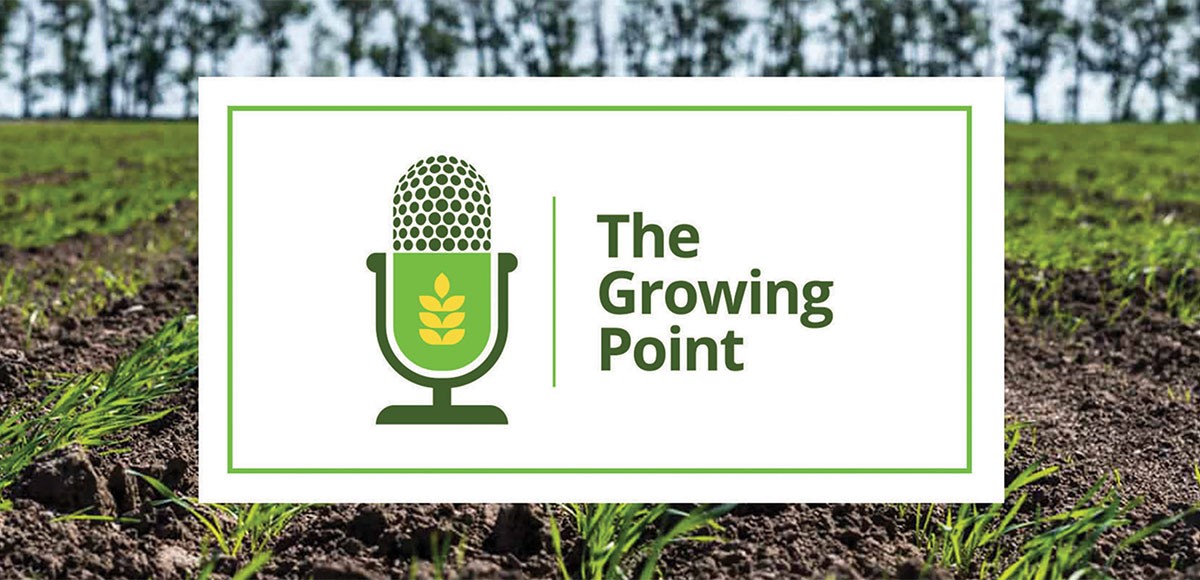Herbicide carryover - causes and considerations

Each management and agronomic action interacts with environmental conditions such as weather, insect pressure, disease presence and soil characteristics. Not surprisingly, the outcomes of agronomic decisions vary depending on environmental conditions before, during and after the implementation of those actions. Herbicide use is no exception.
When herbicide is applied, a large proportion of the herbicide spray reaches the soil surface where it remains active until natural processes degrade the chemicals. Herbicides are degraded into inactive substances by numerous processes driven by factors such as herbicide structure, clay content, organic matter, pH, moisture and soil microbes. For example,
soil temperature can have a significant impact on herbicide breakdown. Cessna et al. (2017) studied soil temperature effects on seven herbicide actives.1 One of the herbicide actives, pyrasulfotole (Infinity), degraded by 50 per cent after 20.8 days at 20 degrees Celsius but 50 per cent degradation at 5 degrees Celsius took 84.4 days (four times longer).
In most cases, microbial activity is responsible for the majority of herbicide breakdown. Microbial activity relies heavily on rainfall and soil temperature. An increase in soil temperature and rainfall leads to an increase in microbial activity which leads to an increase in the rate at which herbicides degrade. Under low rainfall conditions, microbial degradation of herbicides is reduced and therefore increases the risk of carryover of certain herbicide chemistries.
In the 2021 growing season, many parts of Alberta and Western Canada experienced rainfall well below average leaving many fields at risk of herbicide carryover and with reduced options for re-cropping depending on the soil zone, year of herbicide application and herbicide used.
Imidazoline, a group 2 chemistry that is an active ingredient in many products such as Solo, Altitude FX3, Odyssey and Python, are specifically vulnerable to herbicide carryover in drought conditions. This is because imidazoline relies heavily on microbial degradation. Although reduced degradation will occur below this level, degradation of imidazoline is optimized when soil moisture is at 75 per cent of field capacity - the amount of soil moisture or water content held in soil after excess water has drained away2. Due to low rainfall, many fields in Alberta spent much of the growing season well below 75 per cent field capacity.
Producers who applied herbicides with imidazoline chemistry in 2021 are recommended to review field specific rainfall between June 1 to September 1, 2021. Fields that received less than 125 millimetres (4.9 inches) of rain over this period are at high risk of herbicide carryover. Additionally, fields that received less than 15 millimetres (0.6 inches) of rain within any one-month period in the critical months for breakdown (June – September) are also at an increased risk of herbicide carryover. For example, if a field had 127 millimetres (5.0 inches) of rain between June and September, but only 5 millimetres (0.2 inches) of rain in June, then the field is at risk of herbicide carryover and growers will have to carefully consider what they plant on those fields in 2022.
Due to these extenuated circumstances, some chemical companies who distribute imidazoline chemistry have altered re-cropping restrictions or provided messaging to producers regarding increased crop rotation risks to reduce herbicide carryover impacts on 2022 crops.
Producers who have utilized imidazoline chemistry in the 2021 season should communicate with their herbicide company representative to assess risk. If a risk of imidazoline carryover exists, producers can utilize other crops in the 2022 season that will be more tolerant to herbicide carryover.
BASF Canada provided the following list of crops in order of most-to-least tolerant to imidazoline residues:
- Pulse Crops (Field peas, lentils, fava beans and dry beans and soybeans) - Most tolerant
- Spring Wheat
- Barley
- Durum Wheat (non-Clearfield)
- Canary Seed
- Oats
- Flax
- Canola (non-Clearfield)
- Mustard - Least tolerant
In summary, producers who received less that 150 millimetres (5.9 inches) of rainfall on fields that saw imidazoline chemistry in 2021 between June 1 – September 1, 2021, should carefully plan to minimize herbicide injury in their 2022 crops. Fields that received less that 125 millimetres (4.9 inches) of rain over this period and fields that received less than 15 millimetres (0.6 inches) of rain during any one-month period during the critical months for breakdown (June – September) should ensure they observe new cropping rotation recommendations from chemical companies distributing imidazoline chemistry.
References:
1 Cessna, A.J., Knight, J.D., Ngombe, D., & Wolf, T.M. (2017). Effect of temperature on the dissipation of seven herbicides in a biobed matrix. Canadian Journal of Soil Science, 97(4), 717-731.
2 Rai, R. K., Singh, V. P., & Upadhyay, A. (2017). Planning and evaluation of irrigation projects: methods and implementation. Academic press.

